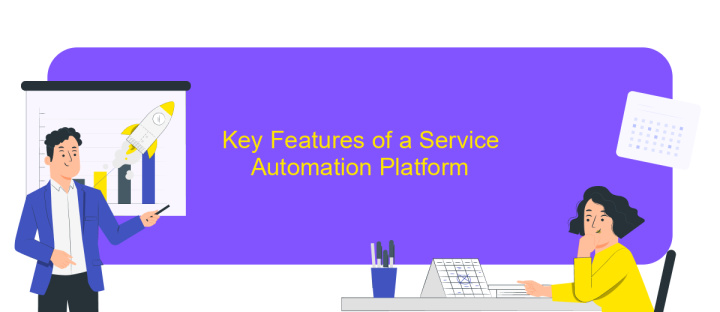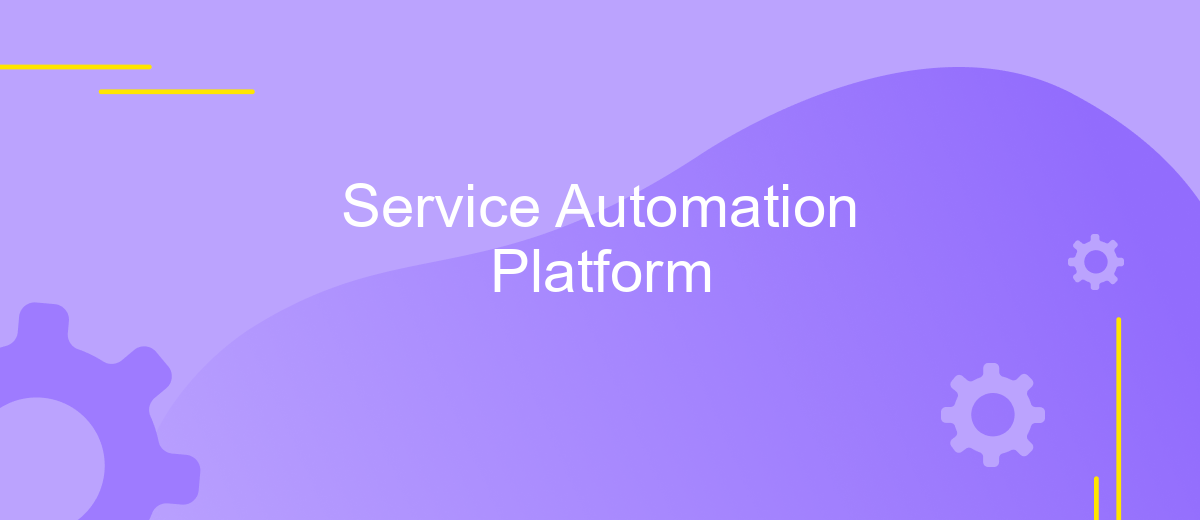Service Automation Platform
In today's fast-paced digital landscape, businesses are increasingly turning to Service Automation Platforms to streamline their operations and enhance efficiency. These platforms integrate various tools and technologies to automate repetitive tasks, reduce human error, and improve service delivery. By leveraging advanced automation, organizations can focus on strategic initiatives, ultimately driving growth and innovation in a competitive market.
Introduction to Service Automation Platforms
Service automation platforms are revolutionizing the way businesses manage their operations by automating routine tasks and streamlining workflows. These platforms integrate various tools and technologies to provide a seamless experience for both employees and customers. By leveraging automation, companies can enhance efficiency, reduce human error, and improve service delivery.
- Task automation: Automates repetitive tasks to save time and resources.
- Workflow management: Streamlines processes to ensure smooth operations.
- Data integration: Consolidates data from multiple sources for better insights.
- Customer support: Enhances customer service through automated responses and ticketing systems.
- Scalability: Easily adapts to growing business needs.
Incorporating a service automation platform into your business strategy can lead to significant improvements in productivity and customer satisfaction. By automating routine processes, your team can focus on more strategic tasks, fostering innovation and growth. Embracing these technologies is essential for staying competitive in today's fast-paced business environment.
Benefits of Using a Service Automation Platform

Implementing a Service Automation Platform can significantly enhance operational efficiency by automating repetitive tasks and streamlining workflows. This not only reduces the chances of human error but also frees up valuable time for employees to focus on more strategic initiatives. Additionally, these platforms often come with advanced analytics and reporting tools that provide real-time insights, enabling better decision-making and improved service delivery.
Another key benefit is the seamless integration capabilities that Service Automation Platforms offer. For example, ApiX-Drive allows businesses to effortlessly connect various applications and systems, ensuring smooth data flow and communication across different departments. This integration capability reduces the need for manual data entry and minimizes the risk of data inconsistencies, thereby improving overall productivity and accuracy. Furthermore, the scalability of these platforms ensures they can grow alongside your business, adapting to new challenges and requirements with ease.
Key Features of a Service Automation Platform

A Service Automation Platform is designed to streamline and enhance the efficiency of service delivery processes. These platforms come equipped with a variety of features that cater to the diverse needs of businesses, ensuring seamless operations and improved customer satisfaction.
- Workflow Automation: Automate repetitive tasks and processes to reduce manual effort and minimize errors.
- Self-Service Portals: Enable customers to resolve issues independently through user-friendly interfaces and knowledge bases.
- Integration Capabilities: Seamlessly integrate with existing systems and third-party applications for a unified service experience.
- Analytics and Reporting: Gain insights into service performance with real-time analytics and customizable reports.
- Scalability: Easily scale the platform to accommodate growing business needs and increasing service demands.
These key features make a Service Automation Platform an indispensable tool for modern businesses. By leveraging these capabilities, companies can enhance their operational efficiency, reduce costs, and deliver superior service experiences to their customers.
How to Choose the Right Service Automation Platform

Choosing the right service automation platform is crucial for streamlining operations and enhancing customer satisfaction. Begin by assessing your organization's specific needs and objectives. Consider what tasks you aim to automate and the scale of your operations to ensure the platform can handle your demands.
Next, evaluate the platform's features and capabilities. Look for a solution that offers comprehensive automation tools, easy integration with existing systems, and scalability to grow with your business. User-friendliness and a robust support system are also key factors to consider.
- Identify your automation needs and goals
- Check the platform's features and integration capabilities
- Ensure scalability and future growth potential
- Consider user-friendliness and available support
Finally, compare pricing models and total cost of ownership. Some platforms may have hidden costs or require additional modules for full functionality. Conducting thorough research and possibly engaging in a trial period can help you make an informed decision that aligns with your budget and operational requirements.
Best Practices for Implementing a Service Automation Platform
Implementing a Service Automation Platform requires careful planning and execution to ensure seamless integration and maximum efficiency. Start by clearly defining your business objectives and identifying the processes that can benefit the most from automation. Engage stakeholders from different departments to gather insights and ensure that the platform meets the needs of all users. Additionally, prioritize user-friendly solutions that offer scalability and flexibility to adapt to future business growth.
Integration is a critical component of a successful service automation platform. Utilize tools like ApiX-Drive to facilitate smooth data exchange between different systems and applications. ApiX-Drive offers a wide range of integrations that can be easily configured without the need for extensive coding knowledge. Regularly monitor and evaluate the performance of your automation processes to identify areas for improvement. Providing training and support to your team will also ensure they are comfortable using the new system, leading to higher adoption rates and better overall results.
FAQ
What is a Service Automation Platform?
How does a Service Automation Platform work?
What are the benefits of using a Service Automation Platform?
Can I integrate multiple applications with a Service Automation Platform?
Is it difficult to set up and manage automated workflows?
Apix-Drive will help optimize business processes, save you from a lot of routine tasks and unnecessary costs for automation, attracting additional specialists. Try setting up a free test connection with ApiX-Drive and see for yourself. Now you have to think about where to invest the freed time and money!

